The Last of Us 2’s beautiful world is filled with death and uses its human cost to make every choice count
Ellie’s journey asks no easy questions and makes you fight for answers
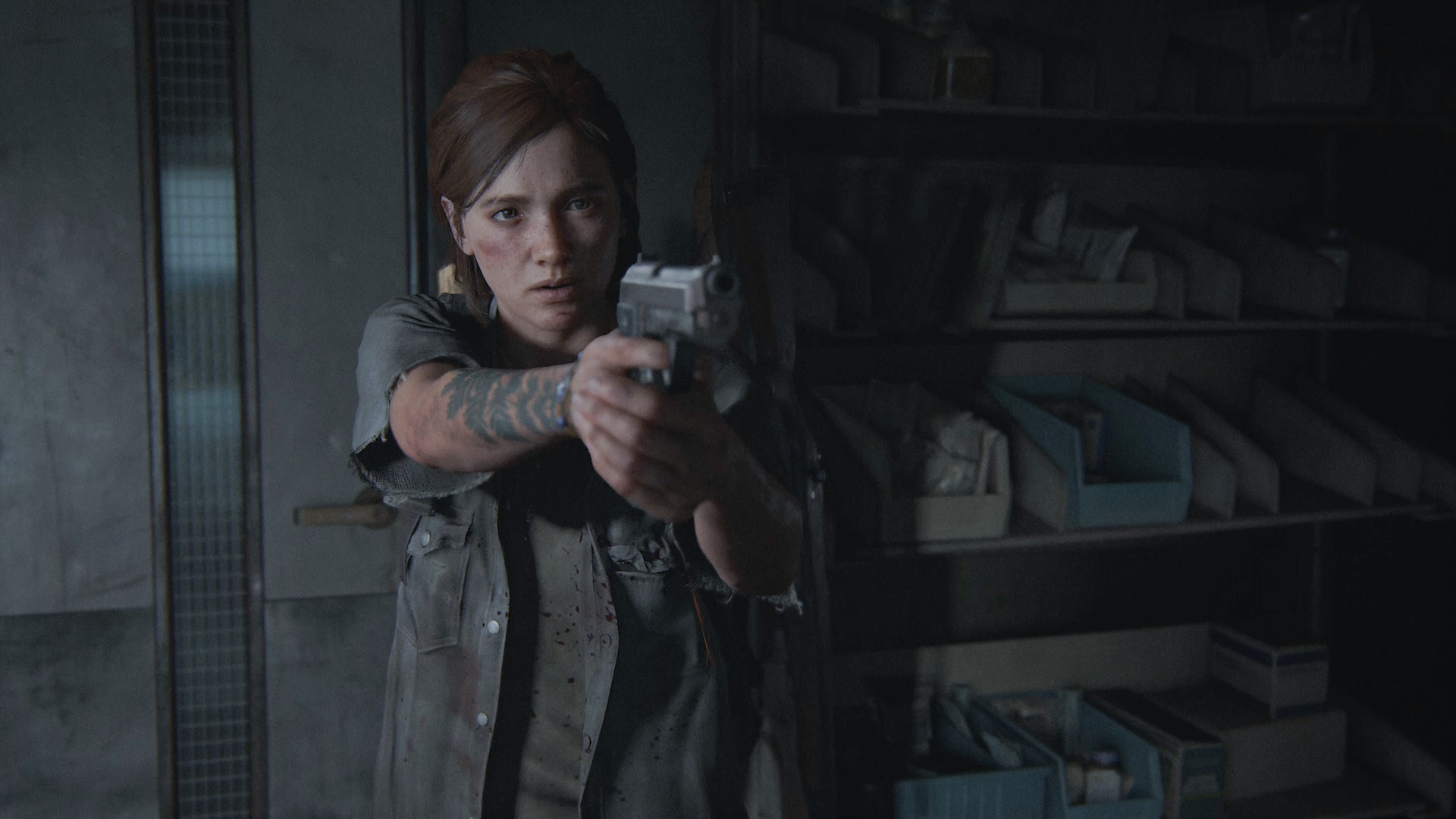
Death is everywhere in The Last of Us 2. Whether from the constantly encroaching precipice of your own finger tipped grasp on survival, or from the guttural, wet noises of the people whose throats you slice open. The blood slides almost lazily from the wounds in your wake. If this were any other apocalyptic zombie game it would have all the red corn starch and air jet spatter humor of a b-movie, or a hint of melodrama to take the edge off. But in Naughty Dog’s impeccably realized world the raw, ragged edges mean you never get to shy away from it, or numb to it entirely. Every person, from passing grunt to grudge match nemesis feels like a human being, making the lives ended along the way feel like more than a casual loss.
At what cost?
Even in the few hours I can discuss - fighting as Ellie through forests and derelict city streets looking for a woman called Nora - the game has an unnerving ability to snap you back to reality for a second to say ’Jesus Christ, what did I just do?’. If the Uncharted series struggled constantly with criticism about the balance between its lovable hero and his trail of bodies that looped the globe several times, The Last of Us 2 isn’t pulling a single punch and Ellie owns every kill unrepentantly.
The studio has repeatedly stated that this sequel is a game about hate, and while you can’t directly feel Ellie’s internal emotional journey, as the architect behind her wrath, Naughty Dog has made sure you never idly steer her rage either. You are killing a lot of people and the game does it in a way that means you will remember at least some of them as more than obstacles.
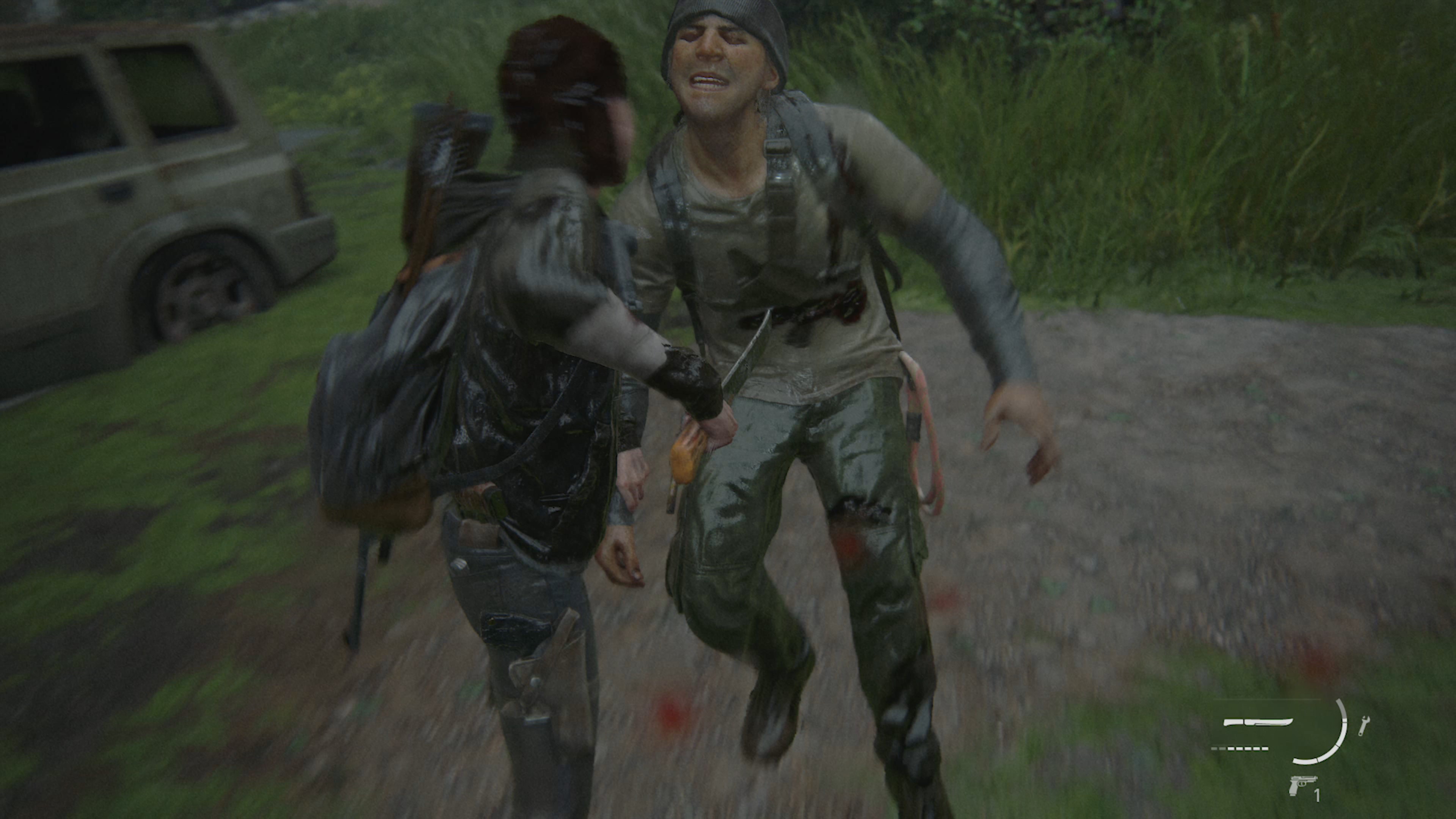
The violence hits hard and lingers because there isn't an inch of what I’ve played that breaks any illusions in the usual video game way. You never get pulled out of the moment, or hit any obvious video game walls. Whether you’re fighting soldiers, cultists, or Clickers, or in more exploratory moments absorbing the desiccated memories of long dead coffee shops, Part 2 is coherent and cohesive in a way few games achieve. From violence to world building it’s unflinchingly ‘real,’ which creates countless uncomfortable moments. People don’t die easily: they protest, cry, and resist, but they die all the same. Because you killed them. For every amazing encounter where you whistle through a fight by the skin of your teeth, lost in the moment, there are events where you have to straight up confront your actions.
Take just one moment where you’re ambushed in an apartment. The fight is a messy trade of gunfire and hammer blows, feet apart, over a dusty breakfast bar. Someone shouts "We won't go back!" in the confusion, but it doesn't register at the time. It’s only after, as you go through the bags of the people you’ve killed, that you discover they were deserters from the WLF, a military faction based in the game's primary setting of Seattle. They were just trying to get away, and you killed them all. You don’t really get any option but there’s enough nuance there to leave you wondering if, in another world (or another video game), there might have been another way.
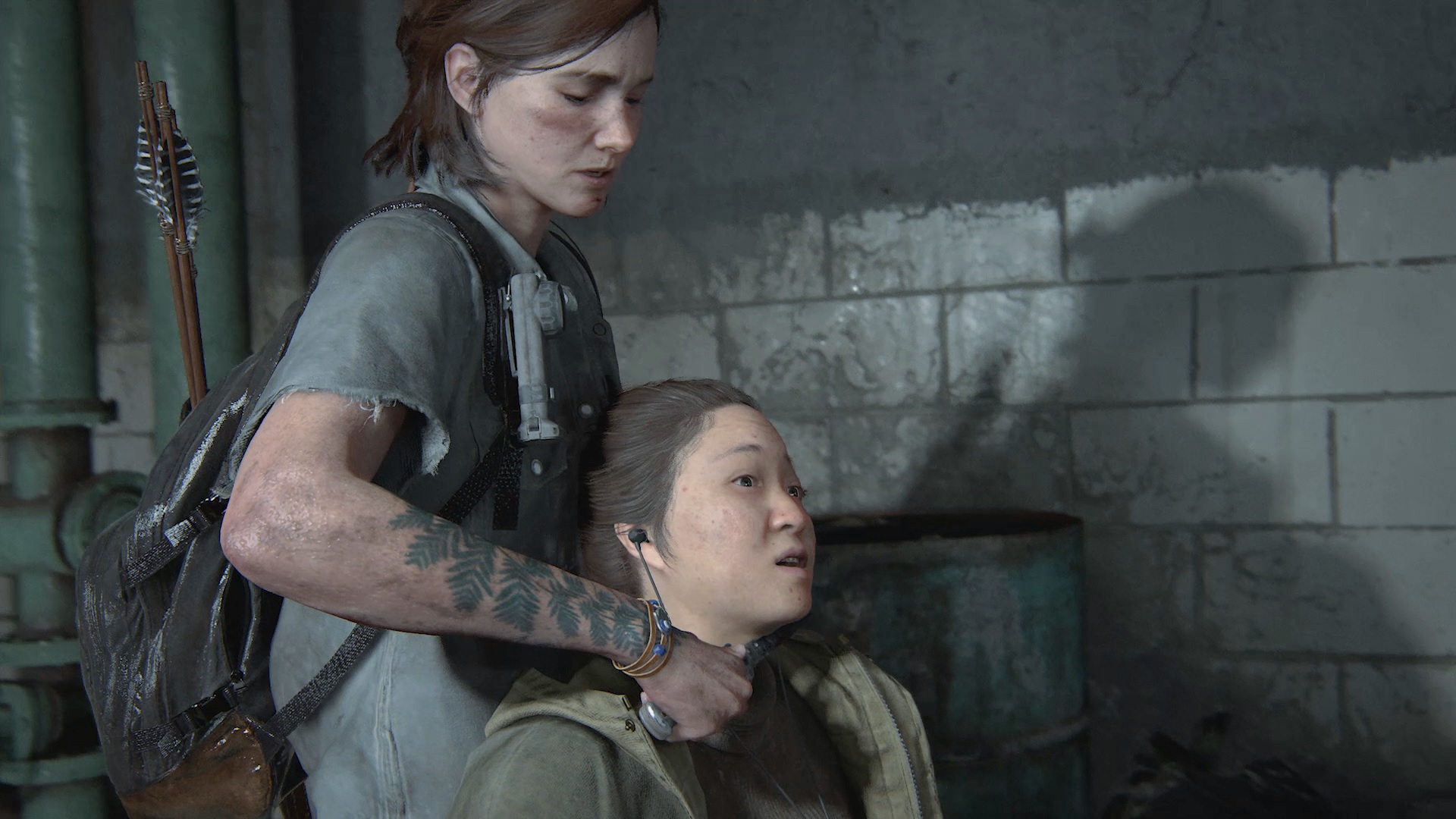
Elsewhere, a girl tries to fight back against Ellie mid conversation and dies so abruptly it seems to surprise Ellie, who stabbed her more out of reflex than thought. “That was dumb” she mutters to the victim's still kicking heels, more annoyed than anything else. Later, at a WLF base, it’s clear the people you're about to kill are just doing a job, but they want to live just as much as you - and you’ve come this far - so let’s see how it plays out...
The Last of Us Part 2 hits the way it does because, despite obviously being a video game, it manages to almost completely avoid the things that remind you of that. There’s never an area cut off in an obviously artificial way for example. Thick vegetation and crumbling rubble hem you into spaces rather than obviously define their limitations. Levels are linear only the respect that there’s a way in and a way out. The route along the way is open and up to you, and it’s an impressive feat to create these levels in such a way that you no longer see them as such. The pace at which you move through this world is as much a part of the story as any dialogue or event.
Weekly digests, tales from the communities you love, and more
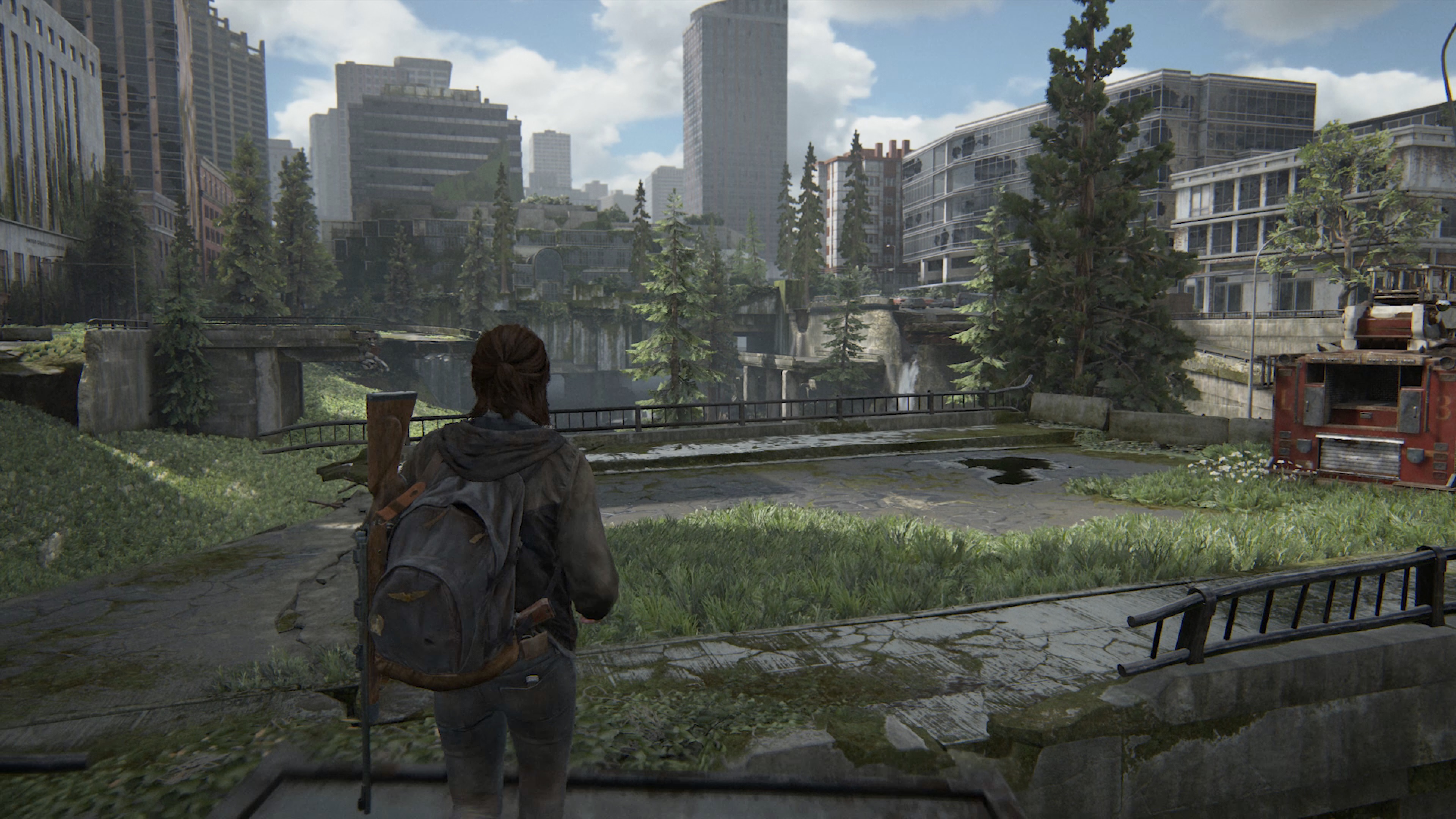
The path ahead
These more realistic spaces create hugely satisfying encounters. A previously revealed area where Ellie fights members of a strange cult in a darkly lit car park actually takes place in a much larger forest. It’s a massively open area, as full of potential routes and options as it is enemies. The fact that you can sneak around, or attack directly from almost any angle or path, follow almost any plan, and have it feel like it was the ‘right’ choice is a testament to how solid the stealth and combat is. You can play the same section multiple ways and have it create a different story each time, depending on how the events unfold and steer you. Ellie might chain together several successful silent kills, leaving to the cult to find the bodies none the wiser. Or you might get caught out, vaulting walls and pelting through the undergrowth to lose chasing gunfire in search of a safe position to recover and regroup.
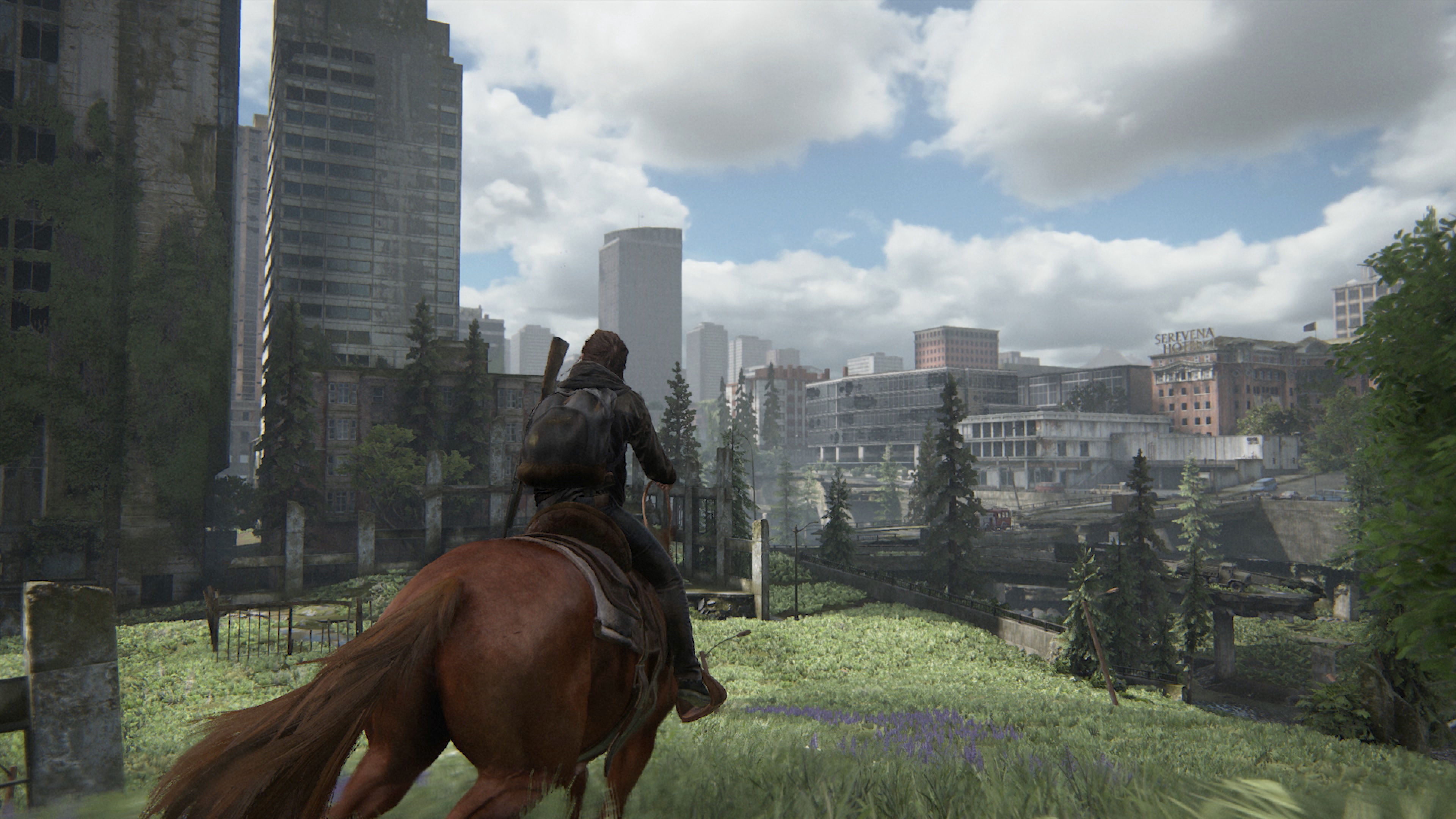
Outside of combat, having a world so solidly grounded in reality means navigating simple obstacles becomes less about solving video game puzzles and more about practical solutions. There are rarely any obvious colored ledges to climb, and instead you’ll find yourself realizing you can clamber on to any appropriate looking crate or car. The simple act of smashing a window with a brick to get inside a promising looking shop, or noticing an inconspicuous basement vent at ground level you can crawl through, feels incredibly satisfying and occasionally like a lightbulb moment when you work out how to reach an apparently closed off area. One physical puzzle involves smashing a window to throw a rope over a pipe and create a way to climb up to an otherwise locked room. There’s no obvious hints or prompts, just an understanding of how ropes, windows, and the laws of physics actually work.
When the more monstrous and inhuman infected appear, the same rules apply but more often within the confines of indoor spaces. One encounter involved a coffee shop full of Clickers and Runners locked up inside. The only way in was by smashing a window, bringing everything inside pouring out. Right to where I’d placed a land mine-like trap bomb, while waiting with a bag full of petrol bombs. Once inside, that same world design applies, only now with office layouts and stores. There are obviously desks and walls for cover but now more gaps - rotten partitions, for example, and other breaks that give you room to maneuver and reposition.
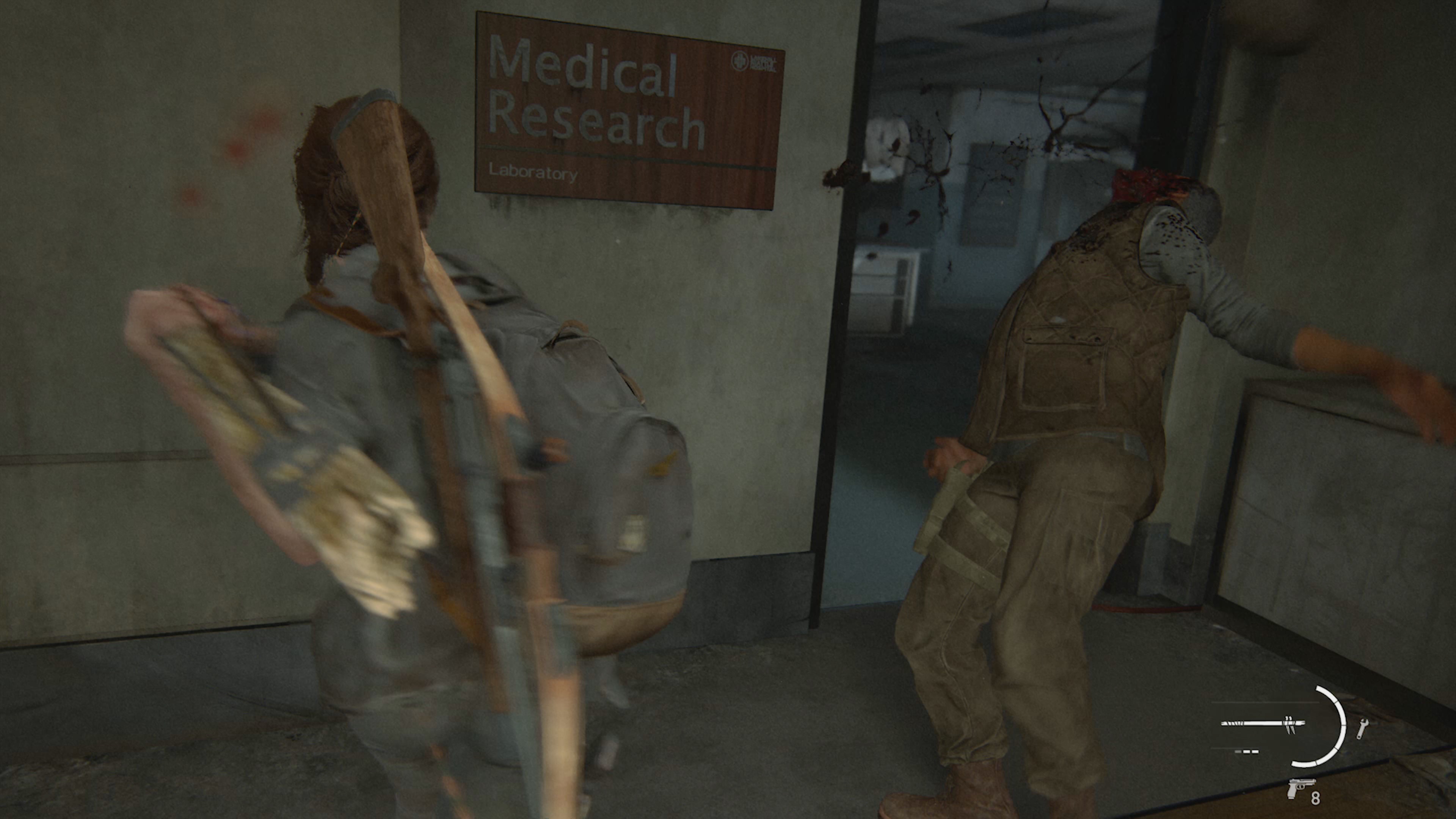
But these opportunities to pursue or escape monsters also create endless corners to watch as you try to manage threats from all angles, anyone of which can end you in an instant. The Clickers’ juddering, throat rattling presence is still the centerpiece to any encounter - their resilience and instakill teeth the fulcrum most encounters pivot on as you thin out Runners and even the odds. Stalkers appear more frequently now as well, their ability to evade your listening sense adding another threat to take into account.
Endure and survive
No matter how well you prepare or plan before an attack, things can go wrong fast. You’re constantly balancing a knife’s edge in terms of scant resources and supplies. A handful of bullets can make you feel powerful going into a fight, but the moment you mess up, a few seconds of panicked blindfire can strip your advantage back to nothing. These are arguably the best parts of what I played - when you simply react on instinct, clawing for another second of life, and another, then another, until either you or the enemy persist. These lizard brain moments can see you lose yourself in survival, only snapping back to reality when it’s over, or something happens to remind you of the cost.
That The Last of Us Part 2 can create such complex emotions in the short segment I can discuss says a lot. But it’s how that plays out over the wider context of the full story that will really leave its mark. It’s a game that’s going to be discussed for a long time to come.

I'm GamesRadar's Managing Editor for guides, which means I run GamesRadar's guides and tips content. I also write reviews, previews and features, largely about horror, action adventure, FPS and open world games. I previously worked on Kotaku, and the Official PlayStation Magazine and website.


